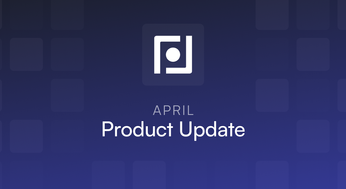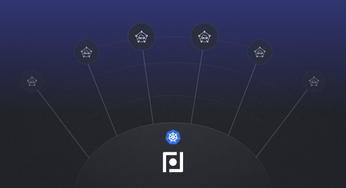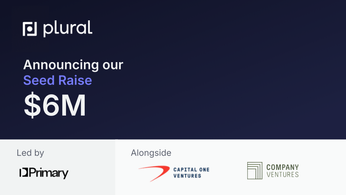
Automated Kubernetes Management: A Practical Guide
Master automated Kubernetes management with this complete guide, covering essential tools, best practices, and strategies for efficient cluster operations.
Table of Contents
Kubernetes is powerful for container orchestration, but its flexibility brings complexity. Managing Kubernetes effectively requires understanding its components, a solid strategy, and the right tools. This guide explores automated Kubernetes management, offering practical advice for DevOps and platform engineers. We'll cover core concepts, essential tools, and best practices for security and optimization. Whether you're handling multi-cluster deployments or seeking efficient Kubernetes application deployment, this Kubernetes definitive guide helps you control your environment and maximize its potential.
Key Takeaways
- Solid Kubernetes management hinges on understanding core components and leveraging the right tools: Mastering concepts like nodes, pods, and services, along with utilizing effective tools, ensures efficient application deployment and operation. Resource allocation, security, and cost optimization are key aspects of successful management.
- Automation and security are your allies in Kubernetes: Automating tasks like deployments and updates reduces errors and allows your team to focus on development. Strong security practices, including network policies and regular audits, protect your systems and data.
- The Kubernetes landscape is dynamic; continuous learning is key: Stay informed about emerging trends like AI-driven automation and edge computing to optimize your Kubernetes strategy. Platforms like Plural can simplify these complex tasks and keep you at the forefront of innovation.
What is Kubernetes Management?
Kubernetes management is the process of overseeing and controlling your Kubernetes clusters. Think of it like conducting an orchestra: Kubernetes is the conductor, your applications (packaged in containers) are the musicians. Managing Kubernetes involves everything from setting up the orchestra (creating the cluster) to ensuring everyone plays in harmony (monitoring performance and health).
This includes essential tasks like creating, updating, scaling, and deleting containers (or "pods" in Kubernetes). You're also responsible for ensuring smooth operation, meaning you need to monitor performance and address any issues. Kubernetes itself is a powerful container orchestration platform designed to simplify running containerized applications. It uses "nodes" – physical or virtual machines – to schedule pods, the smallest deployable units in Kubernetes. Each pod can contain one or more containers. Kubernetes automates the lifecycle of these pods, ensuring your applications are highly available and can scale to meet demand.
This automation is key to Kubernetes' appeal, but it also introduces complexity. Good Kubernetes management requires robust monitoring. You need clear visibility into cluster usage and performance. For enterprise-grade management, this means handling multiple clusters across different infrastructures. This can be a significant challenge as your applications and infrastructure grow. Finding the right tools and strategies is crucial for taming this complexity and ensuring efficient Kubernetes deployments. Platforms like Plural offer automated management and streamline many of these complex tasks, helping you move from struggling with Kubernetes intricacies to focusing on building and deploying great applications.
Kubernetes Components: A Practical Overview
Understanding the core components of Kubernetes is crucial for effective cluster management. Let's break down the key building blocks: nodes, pods, and services.
Nodes: The Foundation of Your Kubernetes Cluster
Nodes are the worker machines within your Kubernetes cluster. They can be physical servers or virtual machines, and they're responsible for running your applications. Kubernetes schedules pods (more on those in a moment) onto available nodes, distributing the workload across your infrastructure. Each node runs a kubelet, which communicates with the control plane, and a container runtime, like Docker, to manage the containers within pods. Think of nodes as the foundation upon which your entire Kubernetes deployment rests. For a deeper understanding of node functionality, Mirantis offers a helpful overview of Kubernetes management. If you're looking for a platform to simplify Kubernetes management, check out Plural for automated cluster operations.
Pods: Running Your Applications in Kubernetes
Pods are the smallest deployable units in Kubernetes. They act as containers for one or more containers, sharing resources like network and storage. When you define a pod, you can specify the required resources for each container, such as CPU and memory. This allows Kubernetes to efficiently allocate resources across your cluster. Pods are designed to be ephemeral, meaning they can be created and destroyed as needed. This flexibility is key to Kubernetes' ability to scale and handle failures gracefully. The official Kubernetes documentation provides a comprehensive guide to resource management for pods and containers. For a more streamlined approach to managing pods and their resources, explore Plural's features for automated resource allocation.
Kubernetes Services: Connecting Your Applications
Services provide a stable entry point to a group of pods, allowing other applications to access them reliably. Since pods can be created and destroyed dynamically, their IP addresses can change. Services abstract this away by providing a consistent IP address and DNS name, ensuring that your applications can communicate seamlessly, even as pods are scaled or rescheduled. This abstraction is essential for maintaining the stability and availability of your applications. Learn more about how Kubernetes services work and how they facilitate communication within your cluster. Simplify your service management with Plural's automated platform, designed to streamline complex Kubernetes operations.
Automating Kubernetes Management
Automation is key to efficient and scalable Kubernetes management. It reduces manual effort, minimizes errors, and frees up your team to focus on building and deploying applications. Let's explore some key automation strategies.
Infrastructure as Code (IaC) for Kubernetes
Infrastructure as Code (IaC) is fundamental to automating Kubernetes deployments. It allows you to define and provision your infrastructure through code, bringing consistency and reproducibility to your cluster setup. With IaC, you can codify everything from Kubernetes clusters and nodes to individual resources, ensuring your infrastructure is always in a known state. This simplifies initial setup and makes it easier to manage changes and roll back to previous configurations. Tools like Terraform and Ansible, combined with platforms like Plural Stacks, provide powerful ways to implement IaC for Kubernetes.
Terraform and Plural Stacks for Automated Infrastructure
Terraform is a widely used IaC tool that excels at managing Kubernetes infrastructure. By defining your infrastructure as code, you gain version control, automated provisioning, and easy replication across different environments. This eliminates manual configuration and reduces the risk of human error. Plural Stacks enhances Terraform by providing a Kubernetes-native, API-driven framework for managing your infrastructure as code. This integration simplifies complex deployments and streamlines the management of your Terraform configurations within your Kubernetes workflows.
Ansible and Plural Stacks for Configuration Management
Ansible is a powerful tool for automating configuration management within your Kubernetes deployments. It lets you define and enforce consistent configurations for your applications and services, ensuring they're deployed and maintained correctly across your cluster. Ansible’s automation capabilities reduce manual effort and ensure your applications always run with the desired settings. Combined with Plural Stacks, you gain a centralized platform for managing your Ansible playbooks and automating configuration updates across your Kubernetes infrastructure.
CI/CD Pipelines for Automated Deployments
Continuous Integration and Continuous Delivery (CI/CD) pipelines automate building, testing, and deploying code changes to your Kubernetes clusters. This automation accelerates your development cycle and ensures new features and updates are rolled out quickly and reliably. Popular tools include Jenkins, GitLab CI/CD, CircleCI, and Argo CD.
Jenkins X, Argo CD, and GitLab CI/CD
Jenkins X is specifically designed for Kubernetes, providing automated pipelines that integrate seamlessly with your cluster. Argo CD offers GitOps capabilities, allowing you to manage your Kubernetes applications declaratively through Git. GitLab CI/CD provides a comprehensive platform for managing your entire software development lifecycle, including automated builds, tests, and deployments to Kubernetes. These tools empower you to automate your deployment workflows and ensure your applications are always up to date.
Plural's Approach to Streamlined Deployments
Plural simplifies Kubernetes deployments with a unified platform for managing your entire application lifecycle. Automate deployments, manage configurations, and monitor the health of your applications all in one place. This streamlined approach reduces complexity and allows you to focus on delivering value to your users. Plural supports popular CI/CD tools, allowing you to integrate your existing workflows seamlessly.
Automated Scaling and Resource Management
Kubernetes automatically manages the lifecycle of your pods, ensuring high availability and scalability. Effective Kubernetes management requires robust monitoring and resource management strategies. You need clear visibility into your cluster's resource usage and performance to ensure applications have the resources they need. By leveraging Kubernetes' autoscaling features and implementing resource quotas, you can ensure your applications handle varying workloads and that resources are allocated efficiently. Tools like Prometheus and Grafana provide valuable insights into your cluster's performance and help you identify potential bottlenecks. Platforms like Plural further enhance these capabilities by providing automated resource management and scaling features, allowing you to optimize your Kubernetes deployments for performance and cost-efficiency.
Essential Tools for Kubernetes Management
So, you’re ready to dive into Kubernetes management? You’ll need the right tools. Think of it like equipping your kitchen—you wouldn’t try to cook a gourmet meal with just a spoon. Here are a few essentials to get you started:
Managing Multiple Kubernetes Clusters with Rancher
Juggling multiple Kubernetes clusters can be a challenge. Rancher helps wrangle them. This platform gives you a single, centralized view for managing all your clusters, regardless of where they reside—on-premises or in the cloud. This simplifies deployments and ongoing management, saving you time and effort. Think of Rancher as mission control for your Kubernetes deployments. For a deeper dive into multi-cluster management with Rancher, check out this helpful article on Kubernetes management tools.
Visualizing Your Kubernetes Cluster
Need a clear picture of your cluster’s activity? The Kubernetes Dashboard is your window in. This web-based UI lets you visualize your cluster, see running applications, manage resources, and troubleshoot issues. It’s a great way to get a quick overview of your cluster’s health and performance. The same article highlighting Rancher also discusses the visualization benefits of the Kubernetes Dashboard.
Helm: Streamlining Kubernetes Deployments
Deploying applications in Kubernetes can be complex. Helm simplifies the process. Acting as a package manager, Helm lets you define, install, and upgrade even complex applications using Helm charts. These charts are pre-configured packages of Kubernetes resources, streamlining your deployments. Learn more about how Helm streamlines deployments in this overview of Kubernetes management tools.
Kubectl: Controlling Your Kubernetes Cluster from the Command Line
For command-line enthusiasts, kubectl is indispensable. This powerful tool lets you interact directly with your Kubernetes cluster to deploy applications, manage resources, inspect logs, and more, all from your terminal. It’s an essential tool for developers and operators seeking efficient control over their Kubernetes environments. This article on Kubernetes management tools provides further details on using kubectl effectively.
Best Practices for Efficient Kubernetes Management
Solid Kubernetes management is crucial for keeping your applications running smoothly and securely. These best practices will help you maintain a healthy and efficient cluster.
Choosing the Right Automation Tools
Automating your Kubernetes workflows frees you to focus on building and deploying applications, not manually managing infrastructure. Choosing the right automation tools is crucial for achieving this efficiency. Let's explore some key considerations.
Open-Source vs. Commercial Solutions
When selecting automation tools, you'll often face the choice between open-source and commercial solutions. Open-source tools like Helm (for packaging and deploying applications), Argo CD (for GitOps-based deployments), and Flux (another GitOps tool) offer flexibility and strong community support. These are great options if you're comfortable managing the technical details and potentially contributing back to the project. However, be prepared to invest time in setup, configuration, and ongoing maintenance. Commercial solutions, on the other hand, often provide enhanced features, dedicated support, and smoother integration with existing systems. This can save you valuable time and resources, especially as your Kubernetes environment grows. Platforms like Plural offer a comprehensive approach to Kubernetes management, including automation, which simplifies many of these complex tasks.
Key Considerations for Tool Selection
Choosing the right automation tools depends on your specific needs and priorities. Prioritize tools that integrate well with your existing infrastructure and CI/CD pipelines. Consider how these tools will fit into your current workflows. Evaluate the learning curve, community support, and documentation available for each tool. Robust community support and comprehensive documentation can be invaluable when troubleshooting. Also, evaluate the scalability and performance of the tools to ensure they can handle growth. A tool that works well for a small cluster might not be suitable for large-scale deployments. Infrastructure as Code (IaC) is essential for managing Kubernetes effectively. Tools like Terraform and Ansible can automate the provisioning and configuration of your clusters, leading to more consistent and repeatable deployments. Many platforms, including Plural via its Stacks feature, integrate directly with these tools. Similarly, robust CI/CD pipelines are crucial. Popular tools like Jenkins, GitLab CI/CD, and CircleCI can streamline your deployment processes and reduce errors.
RBAC: Implementing Role-Based Access Control in Kubernetes
RBAC is fundamental to Kubernetes security. It lets you define who can access what within your cluster, following the principle of least privilege. By granting specific roles to users and service accounts, you limit the potential damage from compromised credentials. Start by grouping users with similar responsibilities and assigning them pre-defined roles, or create custom roles tailored to your organization's needs. Properly configured RBAC prevents unauthorized access and protects your valuable resources. For more information on RBAC, check out the OWASP Kubernetes Security Cheat Sheet.
Resource Allocation and Quotas in Kubernetes
Resource quotas prevent resource starvation. Without them, one misbehaving application could consume all available CPU and memory, impacting other critical services. Define resource limits for namespaces or individual pods to ensure fair distribution and predictable performance. This helps maintain a stable and balanced cluster. Refer to the OWASP Kubernetes Security Cheat Sheet for guidance on setting resource quotas effectively.
Monitoring Your Kubernetes Cluster
You can't manage what you can't see. Comprehensive monitoring provides insights into your cluster's health, performance, and resource utilization. Set up alerts for critical metrics like CPU usage, memory pressure, and pod restarts. Effective monitoring and observability allow you to identify and address issues proactively. This visibility is key to maintaining a healthy and efficient cluster. Learn more about Kubernetes management and using clusters.
Automating Kubernetes Deployments and Updates
Automation is a cornerstone of efficient Kubernetes management. Automating deployments and updates reduces manual effort, minimizes human error, and enables faster release cycles. Kubernetes offers built-in mechanisms for automating deployments, rollouts, and scaling. Embrace these features to streamline your workflows and improve the reliability of your application deployments. Tools like Plural can further enhance automation, enabling you to manage complex updates and dependencies with ease.
Backups and Disaster Recovery for Kubernetes
Even with the best management practices, unforeseen events can occur. A solid backup and disaster recovery plan is essential for minimizing downtime and data loss. Regularly back up your cluster data and configuration, and test your recovery procedures to ensure they function as expected. A well-defined disaster recovery plan provides peace of mind and ensures business continuity. Consider Google's Backup for GKE for a robust and managed approach to data protection.
Common Challenges in Kubernetes Management
Kubernetes offers incredible power and flexibility, but managing it effectively presents some common hurdles. Let's break down a few key challenges DevOps and platform engineering teams frequently encounter.
K3s vs. K8s: Choosing the Right Distribution
Kubernetes comes in various flavors, each tailored for specific needs. Choosing the right distribution is like picking the right tool for the job—a scalpel for precise work, a hammer for heavier tasks. Two popular choices are standard Kubernetes (often called K8s) and K3s, a lightweight distribution. Understanding their differences is crucial for making the best decision for your environment.
Standard Kubernetes (K8s) is the robust, full-featured option, offering maximum flexibility and scalability. It’s the go-to choice for large-scale, complex deployments where you need fine-grained control and a wide array of features. Think of it as the industrial-strength option, ready to handle the most demanding workloads. If you're managing a large fleet of applications with diverse requirements, K8s is likely the best fit. You can learn more about standard Kubernetes on the official Kubernetes website.
K3s, on the other hand, is a streamlined, lightweight distribution designed for resource-constrained environments. It's ideal for edge computing, IoT devices, and other scenarios where minimizing resource consumption is paramount. K3s sacrifices some of the advanced features of K8s for a smaller footprint and simplified operation. This makes it ideal for deployments on devices with limited resources or in environments with unreliable connectivity. For more details on K3s and its use cases, refer to this comparison of K3s and K8s.
Choosing between K3s and K8s depends on your specific needs. Consider the scale of your deployments, the resources available, and the complexity of your applications. If you need maximum scalability and a full suite of features, K8s is the clear winner. If you prioritize resource efficiency and simplified management in a resource-constrained environment, K3s is the better choice. This comparison of K0s, K3s, and K8s offers further insights into selecting the right Kubernetes distribution.
Managing the Complexity of Multi-Cluster Kubernetes
As your applications grow and your infrastructure expands, you'll likely find yourself managing multiple Kubernetes clusters. Perhaps you're running clusters across different cloud providers or need separate clusters for development, staging, and production. This multi-cluster environment quickly becomes complex. Maintaining consistency in configurations, security policies, and application deployments across these disparate environments requires serious work. Ensuring smooth operations and avoiding configuration drift becomes a significant challenge. Mirantis points out that this complexity increases operational overhead and makes maintaining consistent security harder.
Plural's Unified Platform for Multi-Cluster Management
Managing multiple Kubernetes clusters often feels like herding cats. Each cluster has its own quirks, configurations, and security policies. Keeping them all in sync and secure is a constant challenge. Industry experts point out how this complexity increases operational overhead and makes consistent security a struggle. This is where a unified platform like Plural shines. We designed Plural to simplify multi-cluster management by providing a single control plane for all your Kubernetes deployments.
With Plural, you manage deployments, configurations, and security policies across all your clusters from one central location. This streamlines operations, reduces complexity, and ensures consistency across your entire Kubernetes environment. Our platform leverages a secure, agent-based architecture, allowing you to manage clusters anywhere—cloud, on-premises, or even your local machine. This flexibility is crucial for organizations adopting hybrid or multi-cloud strategies. The agent-based approach enhances security by eliminating the need for the management cluster to hold global credentials. Each agent communicates with the management cluster via egress-only networking and uses local credentials for write operations, minimizing security risks.
Addressing Kubernetes Security Vulnerabilities
Security is paramount in any system, and Kubernetes is no exception. With its distributed nature, securing your clusters and applications requires a multi-layered approach. You need to consider everything from securing your container images and configurations to managing access control and network policies. Wiz highlights how vulnerable container images are a major concern, creating potential pathways for exploits. Snyk also emphasizes addressing vulnerabilities and misconfigurations within your Kubernetes setup to protect against malicious actors and other threats.
Optimizing Kubernetes Resource Use and Performance
Kubernetes allows for dynamic resource allocation, but without proper management, you risk resource starvation and performance bottlenecks. Efficiently allocating resources to your pods and containers is crucial for ensuring your applications run smoothly and scale effectively. Over-provisioning resources leads to wasted cloud spend, while under-provisioning can impact application performance and reliability. The official Kubernetes documentation offers a solid foundation for understanding resource management best practices.
Simplifying Kubernetes Configurations
Kubernetes configurations can be complex, involving YAML files, various resource definitions, and intricate relationships between different components. Simplifying these configurations is key to streamlining your workflows and reducing errors. A Medium article discussing Kubernetes management tools explains that managing multiple clusters and their configurations presents a steep learning curve and significant operational overhead. Finding ways to simplify and automate these configurations is essential for efficient Kubernetes management.
Managing Kubernetes Costs
Kubernetes offers incredible scalability and flexibility, but those benefits can come with a hefty price tag if you're not careful. Effectively managing your Kubernetes costs requires a proactive approach and the right tools. Let's break down how to keep your spending in check.
Monitoring Kubernetes Resource Usage
Knowing where your resources are going is the first step to optimizing your Kubernetes costs. You need clear visibility into your cluster usage and performance. Think of it like checking your bank statement—you need to know what you're spending money on before you can create a budget. Effective Kubernetes management tools, like those offered by Plural, provide this crucial insight. By tracking resource consumption at the pod, namespace, and cluster levels, you can pinpoint areas of inefficiency and potential overspending. This data allows you to identify which applications or services are consuming the most resources and whether they truly need that much. Mirantis emphasizes the importance of visibility and observability in Kubernetes management for precisely this reason.
Optimizing Kubernetes Workloads for Cost Efficiency
Once you understand your resource usage, you can start optimizing your workloads for cost efficiency. This might involve right-sizing your deployments, meaning ensuring your applications are using only the resources they absolutely need. Over-provisioning is a common culprit of wasted cloud spend. AltexSoft highlights the importance of analyzing workload performance and resource allocation to avoid this pitfall. Consider using autoscaling to dynamically adjust resources based on real-time demand. This ensures you're not paying for idle capacity during periods of low activity. Another strategy is to leverage spot instances for non-critical workloads, taking advantage of lower prices for spare compute capacity. Check out GKE's pricing options for more information on how they handle this.
Implementing Cost Management Tools for Kubernetes
The right Kubernetes management tools can be game-changers in controlling your cloud costs. These tools can automate cost management processes, providing real-time insights into your spending patterns and helping you identify areas for improvement. They can also offer features like cost allocation and budgeting, allowing you to track spending against specific teams or projects. Mirantis stresses the importance of choosing a tool that aligns with your specific needs and infrastructure. If you're looking for a platform that streamlines Kubernetes operations and helps optimize costs through automation and efficient resource management, consider exploring Plural and booking a demo to see how it can benefit your organization. You can also check out our pricing for more information.
Securing Your Kubernetes Cluster
Security is paramount when managing a Kubernetes cluster. A robust security posture protects your applications, data, and infrastructure. Let's explore some key practices to lock down your Kubernetes environment.
Implementing Network Policies in Kubernetes
Think of network policies as firewalls for your pods. They control the flow of traffic between pods and namespaces within your cluster. By default, all pods can communicate with each other, which presents a security risk. If one application is compromised, it could potentially attack others running on the same cluster. Network policies let you define rules that specify which pods can communicate with each other and with external networks. This segmentation limits the impact of security incidents. Learn more about network policies in the Kubernetes documentation.
Security Audits and Updates for Kubernetes
Regular security audits and updates are crucial for a secure Kubernetes environment. Vulnerabilities are constantly discovered in software, including Kubernetes itself and the applications running on it. Without regular scanning and patching, attackers can exploit these vulnerabilities. Security audits help identify potential weaknesses in your configuration and deployments. Staying up-to-date with the latest security patches mitigates these risks. Tools like vulnerability scanners can help automate this process.
Securing Kubernetes Container Images
Your container images form the foundation of your applications, so their security is essential. Using images from untrusted sources or failing to scan them for vulnerabilities can introduce significant risks. A vulnerable image could be exploited to gain access to your cluster and its resources. Implement a robust process for verifying and securing your container images. This includes using trusted registries, scanning images for vulnerabilities, and signing images to ensure their integrity.
Securing the Kubernetes API and etcd
The Kubernetes API server is the control plane for your cluster, and etcd stores sensitive cluster data, including secrets. Protecting both is critical. Secure the API server by implementing strong authentication and authorization mechanisms, such as Role-Based Access Control (RBAC). This ensures that only authorized users and processes can interact with the API server. etcd should be protected with encryption and access control restrictions to prevent unauthorized access to sensitive information. The OWASP Kubernetes Security Cheat Sheet offers valuable security guidance.
Integrating Kubernetes Management with DevOps
Integrating Kubernetes management with your DevOps practices is key for faster development cycles and more reliable deployments. It streamlines how you build, test, and release software, leveraging Kubernetes’s automation capabilities. Let's look at two crucial components of this integration: CI/CD pipelines and namespaces.
Implementing CI/CD Pipelines for Kubernetes
Kubernetes excels at automating operational tasks like deploying applications, rolling out changes, scaling resources, and monitoring performance. This automation forms the foundation of effective Continuous Integration and Continuous Deployment (CI/CD) pipelines. By automating these processes, your team can deploy updates quickly and reliably, significantly improving your overall development workflow. Picture pushing code changes and having them automatically tested, packaged into containers, and deployed to your Kubernetes cluster. This frees up developers to focus on building great software instead of getting bogged down in deployment complexities. For a more detailed explanation of Kubernetes’s capabilities, check out this overview.
Using Namespaces for Isolation in Kubernetes
In a busy DevOps environment, multiple teams often share the same Kubernetes cluster. This is where namespaces become essential. Namespaces act as virtual dividers within your cluster, isolating groups of resources and ensuring that different teams can work without interfering with each other. This isolation is crucial for collaboration and resource management. The Kubernetes documentation explains how namespaces offer a mechanism for resource quota, preventing any single team from monopolizing resources and impacting other teams' work. Using namespaces effectively creates a more organized and efficient development environment, allowing teams to work independently and deploy applications with confidence.
The Future of Kubernetes Management
Kubernetes has quickly become the leading platform for container orchestration, but the technology keeps evolving. Staying ahead means understanding emerging trends and how they’ll impact your management strategies. Two key areas are shaping the future of Kubernetes: AI-driven automation and the rise of edge computing.
AI-Driven Automation in Kubernetes
Managing the complexities of Kubernetes, especially at scale, can be a major undertaking. AI offers the potential to streamline operations and improve efficiency. Think predictive maintenance: AI could anticipate potential issues before they affect your system, allowing for proactive intervention and minimizing downtime. Imagine your system flagging a potential resource bottleneck and automatically adjusting resource allocation to prevent a service disruption. AI can also analyze traffic patterns and intelligently auto-scale your Kubernetes clusters, ensuring you have the resources you need when you need them, without overspending. As your Kubernetes environments grow, AI can play a crucial role in optimizing resource allocation and improving fault tolerance, leading to more resilient and cost-effective systems. Platforms like Plural are already using AI to simplify Kubernetes management, offering a glimpse into the future of autonomous operations. See Plural's pricing to learn more about AI-driven Kubernetes management.
Edge Computing and Kubernetes
Edge computing, which brings computation and data storage closer to the source of data, presents both opportunities and challenges for Kubernetes management. Kubernetes is well-suited to manage workloads across distributed edge locations, providing a consistent platform for deployment and management. This distributed approach is essential for industries requiring real-time data processing and low latency, such as industrial IoT or connected car applications. Managing Kubernetes at the edge introduces new complexities, including limited resources, intermittent connectivity, and increased security concerns. Effectively orchestrating and managing applications across a diverse and distributed edge infrastructure will be critical for success. As edge computing continues to grow, expect further development and innovation in Kubernetes tooling and management strategies specifically designed for edge environments. If you're interested in exploring how a platform like Plural can simplify your Kubernetes deployments, book a demo.
Kubernetes Certifications and Career Path
As Kubernetes adoption grows, so does the demand for skilled professionals. Earning a Kubernetes certification validates your expertise and can significantly boost your career prospects. This section explores the key certifications available, how to prepare for the exams, and the career opportunities that await certified Kubernetes professionals. If you're looking for a platform to streamline your Kubernetes operations and free up more time for professional development, check out Plural.
Available Kubernetes Certifications
Kubernetes certifications are formal credentials that demonstrate your proficiency in using and managing Kubernetes. These certifications, offered by the Cloud Native Computing Foundation (CNCF) in collaboration with the Linux Foundation, are highly regarded in the industry. The most prominent certifications include:
- Certified Kubernetes Application Developer (CKAD): This certification focuses on designing, building, configuring, and exposing cloud-native applications for Kubernetes. It’s ideal for developers who work directly with Kubernetes deployments. The CKAD exam tests your ability to deploy and manage applications on a Kubernetes cluster.
- Certified Kubernetes Administrator (CKA): The CKA certification is geared towards administrators responsible for managing Kubernetes clusters. It covers installation, configuration, maintenance, and troubleshooting. The CKA exam assesses your skills in managing the overall health and performance of a Kubernetes cluster.
- Certified Kubernetes Security Specialist (CKS): This certification focuses on securing Kubernetes clusters and applications. It covers best practices for security, vulnerability assessment, and incident response. The CKS exam tests your knowledge of Kubernetes security concepts and your ability to implement security best practices.
Preparing for Kubernetes Certification Exams
Preparing for a Kubernetes certification exam requires a structured approach and dedicated effort. Spacelift's guide offers helpful advice on exam preparation. Here are some key steps to help you succeed:
- Review the Curriculum: Thoroughly review the official curriculum for the specific certification you're pursuing. This outlines the exam topics and helps you focus your studies.
- Hands-on Practice with
kubectl: Practical experience is essential. Spend time working withkubectl, the Kubernetes command-line tool. Masteringkubectlcommands is crucial for efficiently managing Kubernetes resources. - Use Exam Simulators: Exam simulators, like Killer.sh, provide a realistic testing environment. Practice with simulators to identify areas for improvement and get comfortable with the exam format.
- Follow Official Exam Guides: Refer to the official exam guides from the CNCF. These guides provide essential details on exam format, allowed resources, and other key information.
Career Opportunities and Salary Expectations for Kubernetes Professionals
The demand for Kubernetes skills is high, and certified professionals are well-positioned for competitive salaries. ZipRecruiter provides salary data for Kubernetes roles. With a Kubernetes certification, you can pursue various career paths, including:
- Kubernetes Administrator: Manage and maintain Kubernetes clusters, ensuring their reliability and performance. This role often involves using tools like Plural to streamline operations.
- Cloud Platform Engineer: Design and implement cloud-native infrastructure, leveraging Kubernetes for container orchestration.
- DevOps Engineer: Automate deployments and manage the software development lifecycle using Kubernetes and other DevOps tools.
- Site Reliability Engineer (SRE): Ensure the reliability and availability of applications running on Kubernetes.
A Kubernetes certification validates your skills and demonstrates your commitment to professional development. As the cloud-native ecosystem expands, so will the career opportunities for certified Kubernetes professionals. If you're ready to take your Kubernetes skills to the next level, explore the certification options and start preparing for your exam. For a more streamlined approach to Kubernetes management, consider Plural.
Getting Started with Kubernetes Management
So, you're ready to dive into Kubernetes management? Whether you're a seasoned DevOps pro or just starting out, effectively managing your Kubernetes clusters is key to success in today's cloud-native world. This section breaks down how to get started, step by step.
Building Your Kubernetes Knowledge
Before setting up clusters, grasp the core concepts of Kubernetes. Kubernetes is like an orchestra conductor for your containerized applications. It handles the complexities of deploying, scaling, and managing those applications. Understanding how Kubernetes orchestrates containers, manages resources, and maintains cluster health is fundamental. Resources like Mirantis's overview of Kubernetes management offer a solid starting point. Familiarize yourself with key Kubernetes components like nodes, pods, and services—the building blocks of your infrastructure.
Setting Up Your First Kubernetes Cluster
With the basics down, set up your first Kubernetes cluster. The official Kubernetes documentation on cluster administration is an invaluable resource. It provides detailed guidance on creating, configuring, and securing your cluster. Choosing the right Kubernetes distribution is crucial. Opt for a well-maintained and actively tested distro with a recent Kubernetes version. This ensures stability, access to new features, and ongoing support.
Implementing Monitoring and Logging for Kubernetes
With your cluster running, set up robust monitoring and logging. These tools provide crucial insights into the health and performance of your applications and the cluster itself. Kubernetes offers built-in tools, but consider third-party solutions for more advanced capabilities. Effective monitoring helps identify and address potential issues. Logging provides a detailed audit trail of cluster activity, essential for troubleshooting and security. These tools are your eyes and ears within the cluster. Mirantis emphasizes the importance of monitoring and logging, especially for managing multiple clusters across different environments. This becomes even more critical as your infrastructure grows. Consider exploring Plural for streamlined Kubernetes management, including automated maintenance, updates, and compliance. Book a demo to see how Plural simplifies these complex tasks. Check out our pricing to learn more.
Related Articles
- Plural | Kubernetes Dashboard
- Plural | Global services
- Plural | Namespace-as-a-service
- Plural | Continuous Deployment
- Plural | Policy enforcement with OPA GateKeeper
Frequently Asked Questions
What's the simplest way to explain Kubernetes?
Imagine Kubernetes as an air traffic controller for your software applications. It manages all the different parts of your apps, making sure they run smoothly, scale up or down as needed, and recover from any problems.
How do I choose the right Kubernetes management tools?
Choosing the right tools depends on your specific needs and the complexity of your setup. If you're just starting out, focus on tools that simplify basic cluster operations and monitoring. As your needs grow, consider platforms that offer more advanced features like automated deployments, security management, and cost optimization. Don't be afraid to experiment and find what works best for your team.
What are the biggest security risks with Kubernetes, and how can I mitigate them?
Some of the biggest security risks include vulnerabilities in container images, insecure API access, and weak network policies. Mitigate these risks by regularly scanning images for vulnerabilities, implementing strong access controls, and defining strict network policies to control traffic flow within your cluster.
How can I keep my Kubernetes costs under control?
Monitor your resource usage closely to identify areas of overspending. Optimize your workloads to ensure you're not using more resources than necessary. Consider using autoscaling to dynamically adjust resources based on demand. Also, explore cost management tools that can provide insights into your spending patterns and help you optimize your budget.
What's the best way to get started with Kubernetes if I'm new to it?
Start by learning the fundamental concepts. There are tons of online resources and tutorials available. Once you have a grasp of the basics, set up a small test cluster to experiment with. Hands-on experience is the best way to learn. Don't be afraid to break things in your test environment – that's what it's for!
Newsletter
Join the newsletter to receive the latest updates in your inbox.









